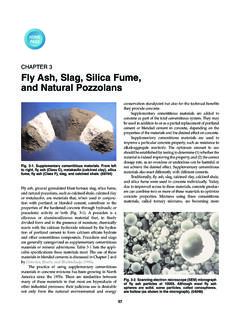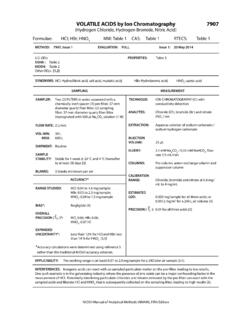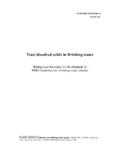Volatile Matter
Found 5 free book(s)Fly Ash, Slag, Silica Fume, and Natural Pozzolans, Chapter 3
www.ce.memphis.eduignition in the furnace, most of the volatile matter and carbon in the coal are burned off. During combustion, the coal’s mineral impurities (such as clay, feldspar, quartz, and shale) fuse in suspension and are carried away from the combustion chamber by the exhaust gases. In the process, the fused material cools and solidifies into spheri-
NMAM 7907: VOLATILE ACIDS by Ion Chromatography …
www.cdc.govINTERFERENCES: Inorganic acids can react with co-sampled particulate matter on the pre-filter, leading to low results. One such example is in the galvanizing industry, where the presence of zinc oxide can be a major confounding factor in the ... VOLATILE ACIDS by Ion Chromatography: METHOD 7907, Issue 1, dated 20 May 2014 - Page 4 of 6 16 ...
NMAM 0500: PARTICULATES NOT OTHERWISE REGULATED, …
www.cdc.govOrganic and volatile particulate matter may be removed by dry ashing [3]. OTHER METHODS: This method is similar to the criteria document method for fibrous glass [3] and Method 5000 for carbon black. This method replaces Method S349 [5]. Impingers and direct-reading instruments may be used to collect total dust
Dry Etching (1)
www.uvu.eduPlasma: The fourth state of matter generated with high heat or sending in a high electrical voltage into gas. Selectivity: The different in in etch rate between the etch surface and the resist or the layer ... creating volatile product which is then removed. The result is an etch surface. § Chemical/Physical etching or reactive ion etching (RIE)
Total dissolved solids in Drinking-water
www.who.intamounts of organic matter present in solution in water. The principal constituents are usually calcium, magnesium, sodium, and potassium cations and carbonate, hydrogencarbonate, chloride, sulfate, and nitrate anions. Organoleptic properties The presence of dissolved solids in water may affect its taste (1). The palatability of drinking-




